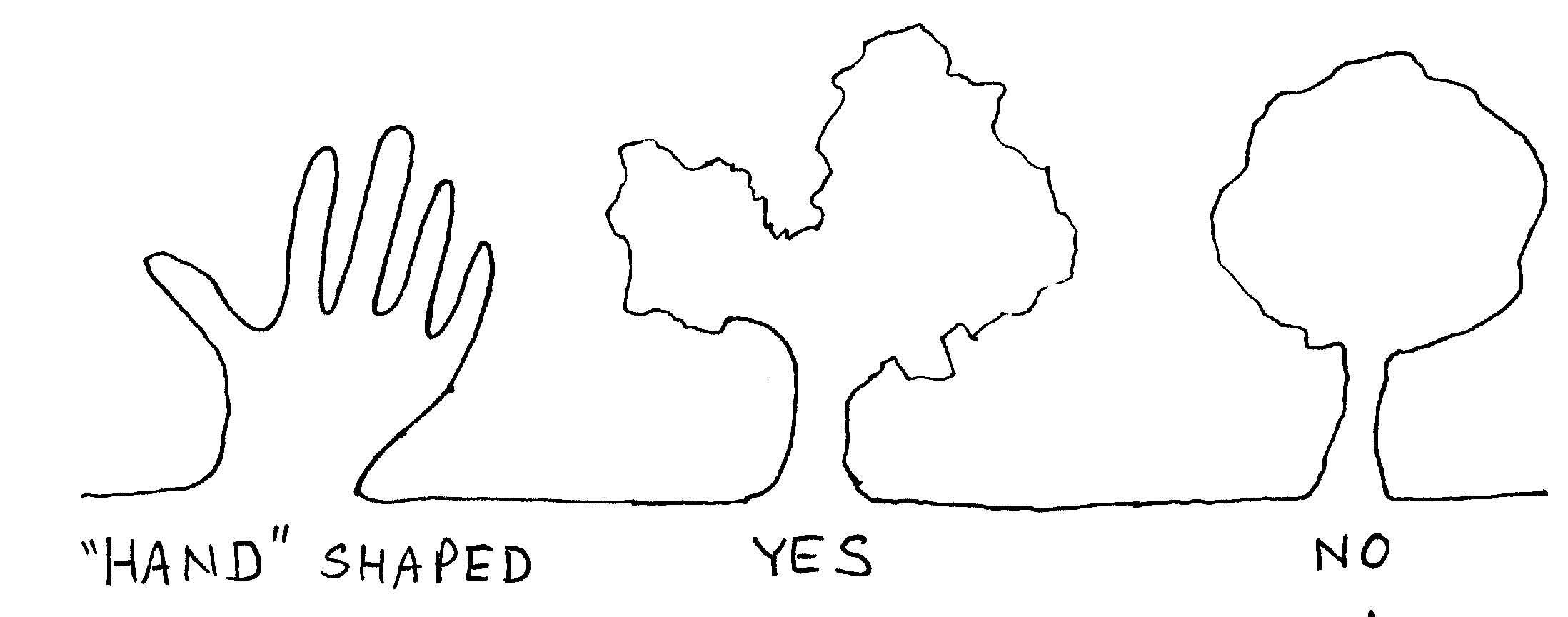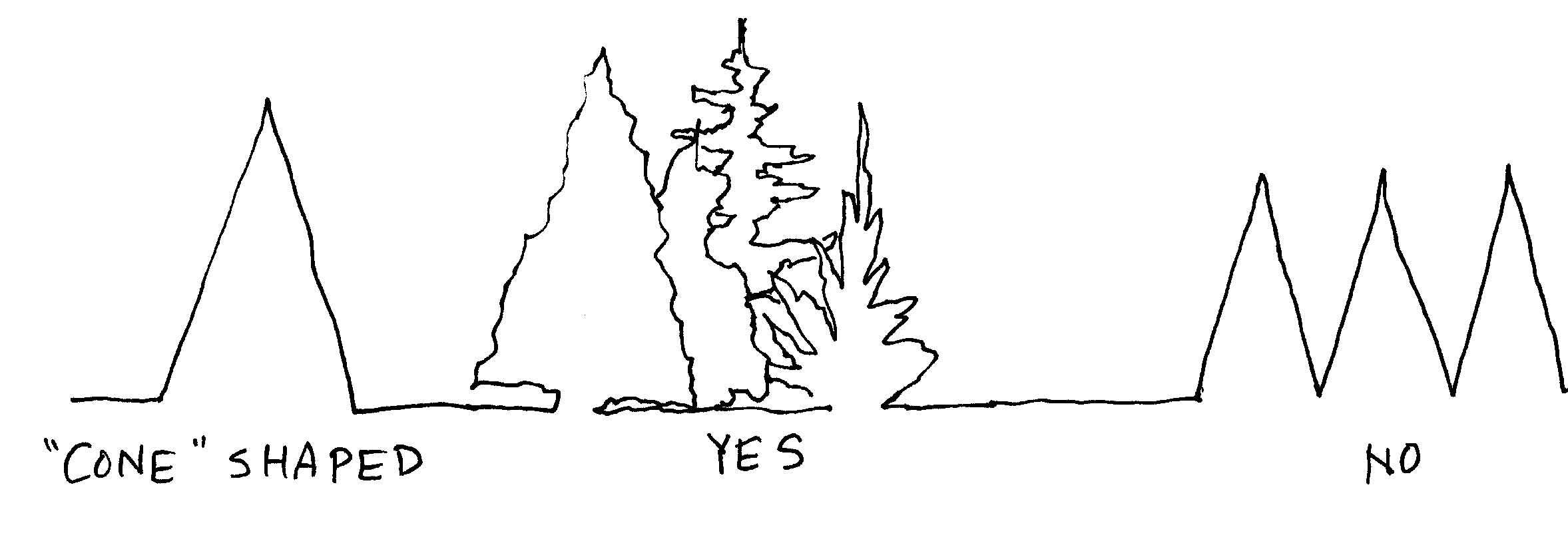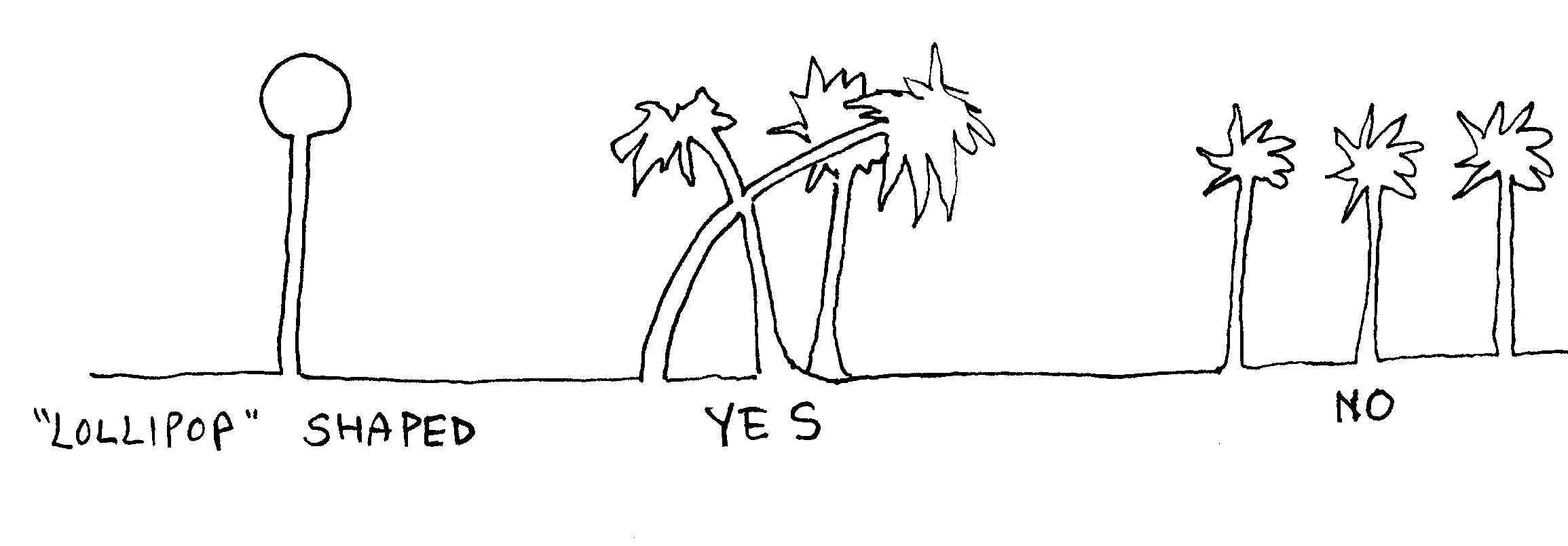Trees are the furniture of the landscape. As such, you can move them around, zoom in and pull back, change their color, texture and lighting to accomplish your artistic goals. In this enterprise, knowledge is power and the more you know about trees, the more powerful your tree paintings will be.
Fortunately, you don’t have to know everything about all the different species of trees. In art you can get by for some time knowing only three species of tree: Hand, cone, and lollipop.
Hand Trees — Deciduous trees such as oak, elm, maple, birch, aspen, alder, willow, apple, pear, peach, etc. etc. They tend to bud and blossom in spring, leaf out and fruit in summer, change color in fall, and lose their leaves in the winter. These are the classic kindergarten artist trees, so we call them “hand” trees to remind us that they are best drawn asymmetrically, not as lollipop trees.
Tips:
- Sketch the limbs bare first to support the main shapes.
- Trunk should merge with ground in color and value.
- Go from fat to thin as you move from trunk to limb to branch to twig.
- Describe main limbs with straight, not curved lines.
- Vary the departure point and angle of limbs from the trunk.
- In general, lower limbs sag down, upper limbs angle up.
- Look at trees to observe the fine points of their differences
- Model the trunk and thick limbs with highlights and shadows. Very wide trunks can have a lit side, shadow “core” and reflected backlight on the unlit side.
- Trunks tend to be lighter and warmer at the bottom, darker and cooler as they rise.
- For foliage, less is more. Show more limbs than most trees show in summer.
- Paint masses of foliage, not individual leaves. Use rough texture or distinct leaf shapes at the edges of the masses.
- Model the masses of foliage with light and shadow
- Leave holes in foliage for sky and branches to show through, or scrape branches out of dark foliage.
Cone Trees – Evergreen trees such as pine, fir, cypress, redwood. They keep their leaves or needles and stay green all year. They are generally cone shaped, with a large central trunk, long limbs at the bottom and shorter limbs at the top. But there are many variations.
Tips
- “Cone” can be skinny as a needle, or fat and blunt like a bomb.
- Color tends to be more blue green than hand trees.
- Avoid perfect symmetry
- Vary size and spacing to avoid a “sawtooth” effect.
- Scrape out or paint bare trunk showing through.
- Vary the color slightly to show modeling and make individual trees stand out in clumps.
- Exaggerate modeling: lighter on lit side, darker on shaded; warmer near ground, cooler against sky.
- Don’t try to paint individual needles. Paint the typical texture at the edge of large shapes.
Lollipop Trees – Palms of the “stick and ball” variety, with long thin trunks and fronds at the top. Nice vertical design elements that add detail to the sky without hiding the ground. Avoid the static lollipop-on-a-stick look by cropping, clustering, and overlapping for a syncopated rhythm.
Tips
- Because different types look similar, it helps to observe carefully and exaggerate what differences there are. Look closely at trunk’s thickness, taper, curvature, texture, color, modeling.
- Exaggerate modeling, texture, and color temperature changes on the trunk.
- Fronds often cast interesting shadows on the trunk.
- Some trunks have diamond shaped scars where fronds have fallen or been trimmed off. These can be indicated by scraping in wet paint.
- Color of fronds tends to be bright yellow green at the top, duller in the middle, and brown or gray at the bottom.
- Scrape out highlights where sun is reflecting off shiny fronds.
- Don’t try to show every frond – use masses of color and value, with frond shapes at the edges.
- Look for orange fruiting bodies among the fronds.
Avoid the “pom pom” effect by noting that fronds sprout in sequence from the top 5-10 feet of the palm—they don’t all radiate from a single point.



